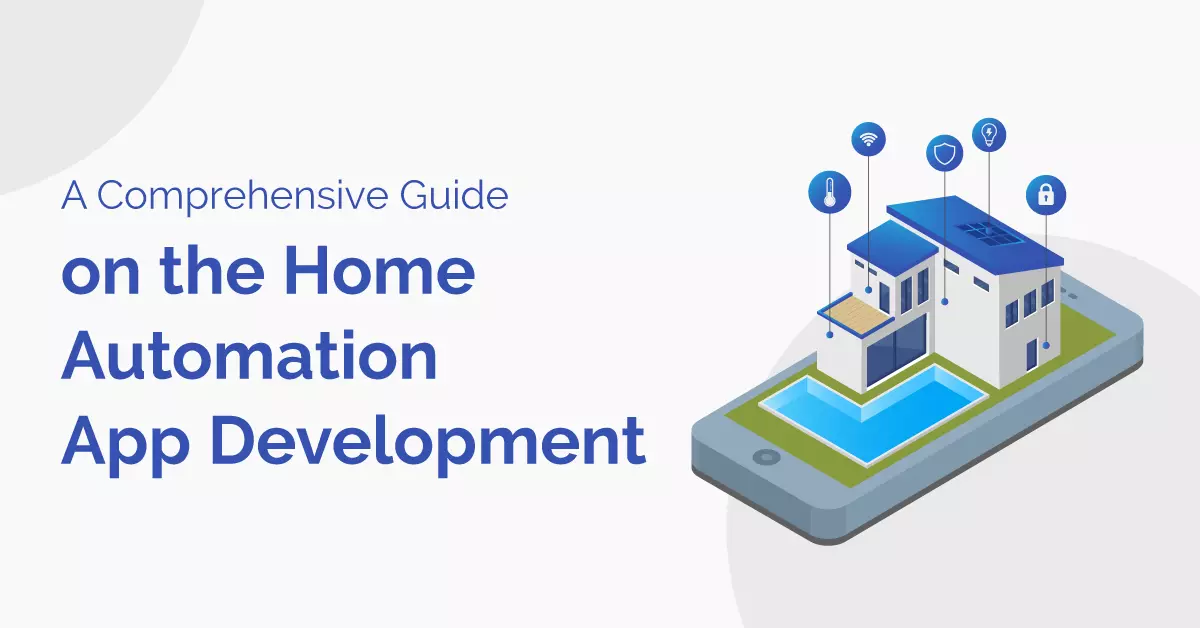A Comprehensive Guide on the Home Automation App Development

How to Develop Home Automation App
All of us deserve to feel comfortable and secure in our own homes, and that’s precisely what we get with the latest generation of any intelligent home app. Home Automation App Development facilitate the enhanced convenience of having every aspect accessible with just a few taps of your finger.
However, to Home Automation App Development without any prior expertise may feel like a formidable task. For precisely that reason, we at OneClick have explained how does home automation work in this article. We have also gathered all the necessary information you would need to develop the best app for home automation in one place, from categories of apps to useful tips for developing them. We can also provide assistance in finding and hiring app developers to build a smart home app that will help your company grow. Our firm boasts extensive expertise in Internet of Things (IoT) solutions, and we can provide you with the deliverables you need quickly.

What is a Smart App?
Smart Applications, also known as Smart Apps, are software that collect a large volume of information from numerous sensors and other inputs. They then combine machine learning algorithms with predictive modeling to translate the information into insightful observations about the end-user experience. The rapid emergence of the Internet of Things (IoT), large chunks of data, and machine learning over the last several years has compelled businesses to reframe their applications as data-propelled and user-centered services.
A smart application, in these instances, boosts the capability of a device or system that a company can use to its advantage. The process often seems automated. However, the fact that a smart app is powered by data is the defining characteristic of a smart app. For this reason, sensors are a crucial component of the architecture of many popular smart gadgets, such as Fitbits.
What is Smart Home Automation?
The term “home automation” refers to the process of electronically and automatically controlling numerous aspects of a home, including its devices, activities, and fixtures. What this implies, in layman’s words, is that you may turn your residence more comfortable, safe, and cost-effective by remotely adjusting its utilities and features through the Internet.
Through the use of a system of interconnected hardware, communications, and electronic interfaces, home automation facilitates the interconnectivity of common household appliances and gadgets across a network. Since every device is WiFi-enabled and equipped with sensors, you can use a single app to control all smart devices from anywhere, regardless of where you happen to be. This gives you the ability to perform things like switch on the lights, shut the front door, or even adjust the temperature in the house no matter your location.
Types of Smart Hardware and use Cases

What distinguishes a smart house from other homes is the use of networked, modern technology, and smart home programming. These Wi-Fi-enabled gadgets not only make your life simpler, but they also spare you time and funds by performing a wide range of useful functions. More and more smart gadgets are being developed, and they will only get smarter in the years to come. Keep reading if you’re curious about the types of smart gadgets. We have collected a list of some of the most fascinating and innovative smart home products.
1. Smart Speakers
One of the most widely used smart devices, the smart speaker is capable of far more than just playing music. It uses Wi-Fi for connectivity and has a voice-activated digital assistant. Small enough to fit almost everywhere, even on countertops and nightstands, smart speakers are a convenient addition to any house.
2. Smart Plugs
The outward appearance of smart plugs is identical to that of standard plugs, and they can be used in the same wall outlets as standard plugs. By linking to your Wi-Fi and Bluetooth, they let you command your home’s numerous appliances from your smartphone with the use of a dedicated app or voice-activated assistants like Amazon’s Alexa or Google Home.
Smart plugs, once configured, provide the on/off control of appliances as well as the scheduling of their automatic startup.
3. Smart Bulbs
We all have heard about smart lights. Simply connect it to an electrical outlet and switch it on; no other accessories are required. They are capable of emitting thousands of colors and can be programmed to illuminate at specified periods.
Newer generations of smart bulbs, however, allow for a wide range of customization in terms of brightness, color temperature, and more. The more advanced models can even synchronize with your games, movies, and music.
4. Smart Thermostats
The power demands of a home’s air conditioning and heating systems are sizable. A smart thermostat, on the other hand, may help you save a large amount of money in addition to cutting your energy use.
A smart thermostat can adapt to your heating and cooling habits over time. The system learns your preferences and automatically adjusts to maintain a high level of comfort while using as little energy as possible.
5. Smart Hub
If someone owns a number of interconnected smart home gadgets, it makes sense to use a smart hub that can manage everything. A Smart Hub simplifies the management of all smart devices in your home. There needs to be only one app to control all smart devices, and you can control all of your smart home’s gadgets from any given space. Scenes and automation settings are also accessible. It’s easy to connect a wide variety of gadgets and use voice assistants like Alexa and Google Home to manage them.
Embedded programming: How to build a smart home system
There is a wide variety of tools required for an Iot ecosystem, but the four cornerstones are sensors, connectivity, data processing, and data management. The objective of Internet of Things (IoT) system integration is to bring all of these components together to meet the needs of specific industries and specific use cases for individual clients.
IoT devices rely heavily on embedded programming to function. C and C++ are presently the two most used languages for developing embedded applications. Mastering these integral manufacturing systems will likely demand learning C/C++ and gaining knowledge of electronics via hands-on work.
Syntactically, C and C++ are quite similar. C is regarded as more trustworthy and has a superior performance by directly dealing with the hardware; nevertheless, C++ offers certain added benefits, such as greater security and proximity to real-world applications. Follow these steps in order to create a competitive product:
- Master C or C++
- Acquire Some Fundamental Knowledge about electronics
- Acquire the Necessary Tools
- Pick a Microcontroller and its Accompanying Software Development Environment
- Get Acquainted with the Datasheets
- Analyze the Elements (software and hardware)
- Build a product design
- Create a Prototype
- Perform application testing
- Deploy the application
- Provide frequent updates and regular support
Our Experience
With over a decade of experience in the field, OneClick is well-equipped to Home Automation App Development and provide a wide range of highly effective and commendable home automation services. OneClick offers smart home automation gateways and Home automation IoT solutions for OEMs that offer a cost-effective and secure way of connecting the Internet of Things devices to industry-leading cloud platforms.
To guarantee that the final product is user-friendly, safe, and economical, our product development team carefully considers a wide range of factors, including sensors, system architecture, connection, and power demand.
Our home automation services provide comfort and safety by allowing you to manage your home’s environment at the touch of a button.

Why OneClick for your Smart Home Automation Apps
OneClick is well-versed in the development of home automation systems, and our products make it possible to command all aspects of networked smart homes from a single interface, whether at home or elsewhere. As a dominant player, we have mastered the science of home automation with our innovative portals, control systems, and sensor integration. We can now deploy this expertise to deliver excellent, functional, and best app for smart home.
In order to create fully functional smart homes, OneClick offers a variety of home automation systems and designs. This encompasses a wide range of functions, from power management to emergency management to the incorporation of sensors into Home Automation App Development systems to enable remote control and threat detection. Our smart home automation systems link household products, switches, and other components to a central hub, allowing individuals to effortlessly control these items in a secure manner.





